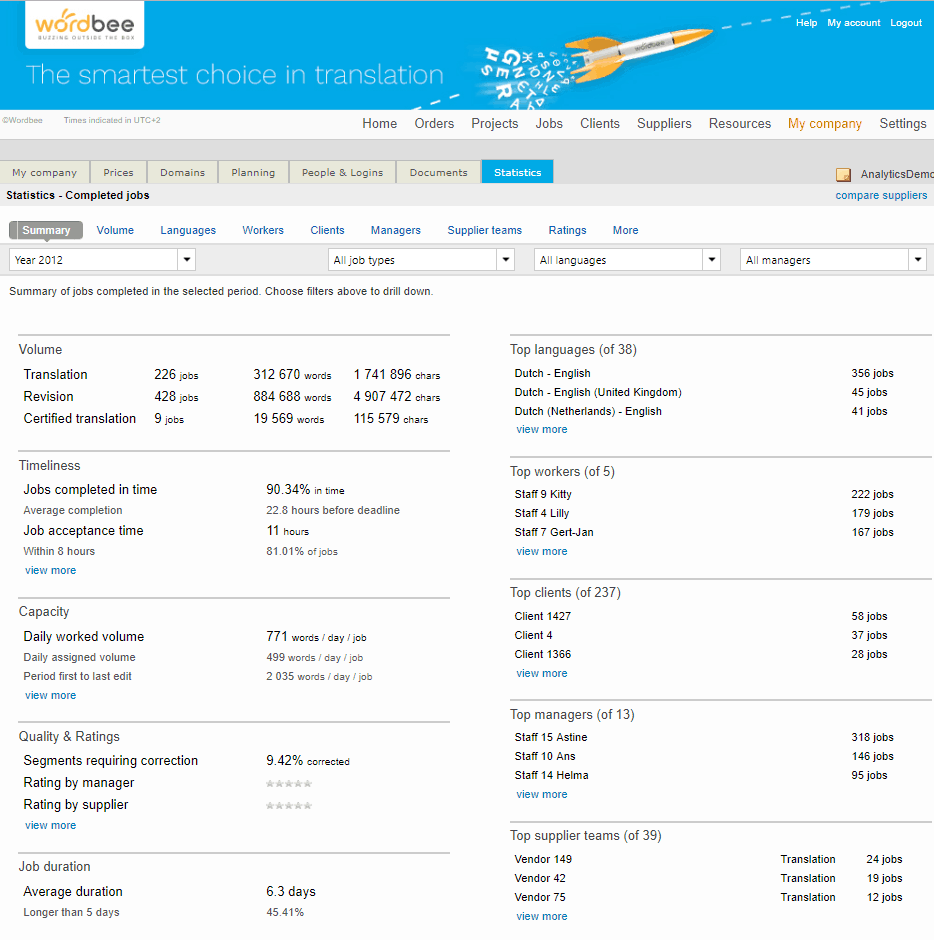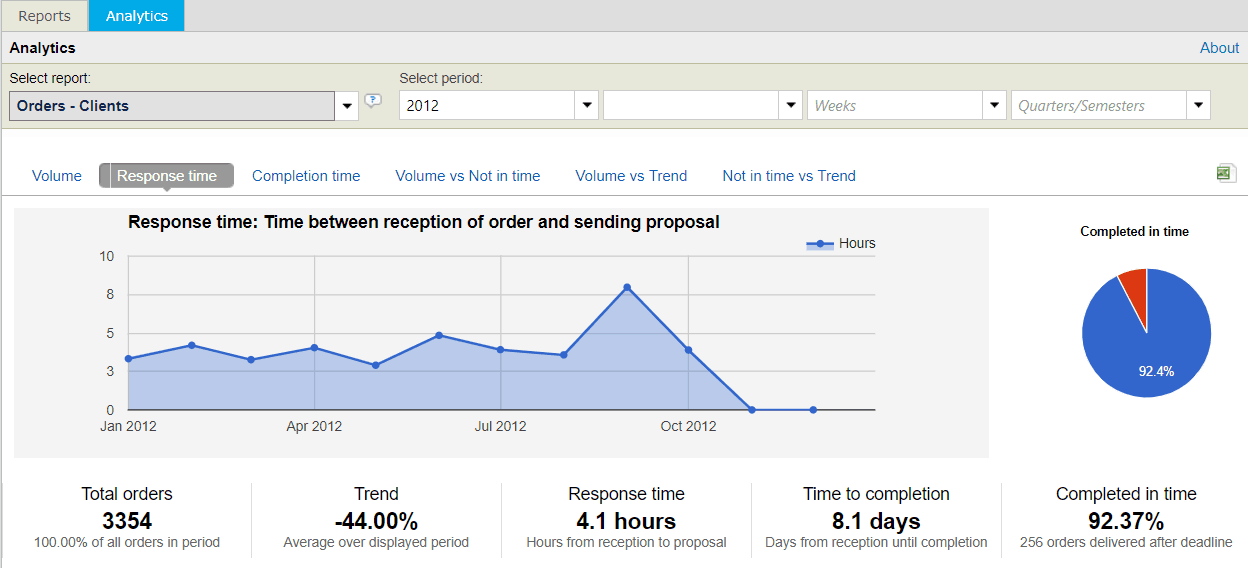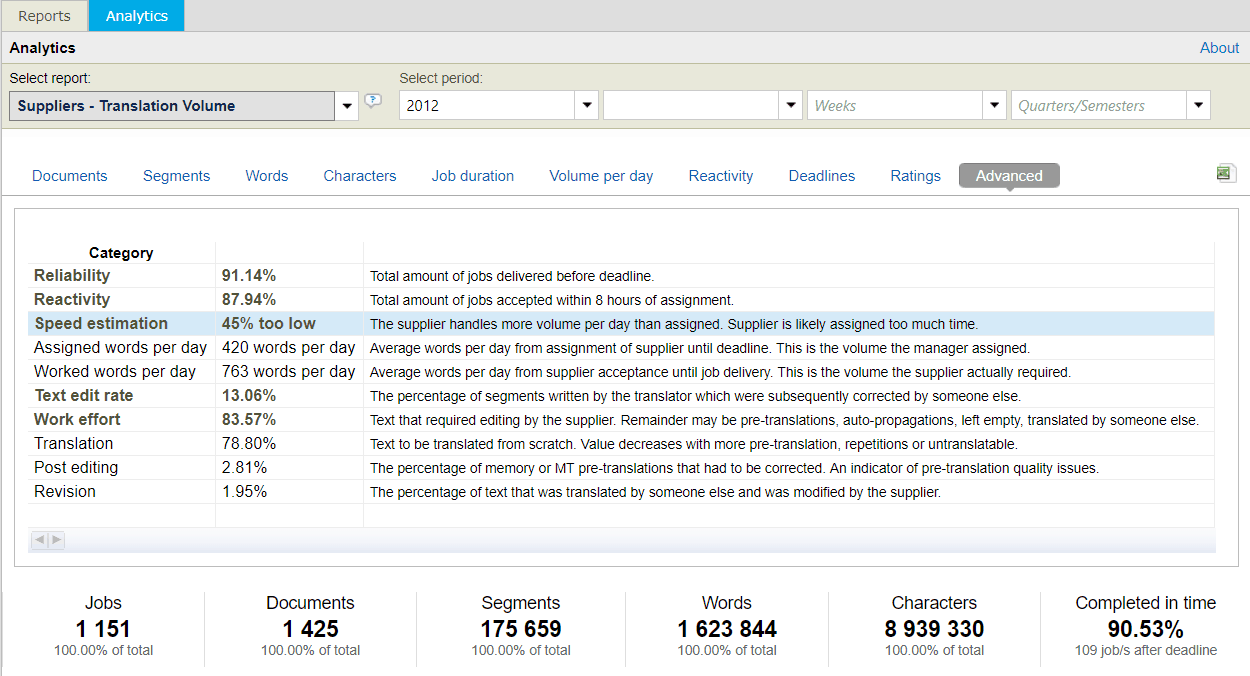Business Analytics for Translation and Localization: The Capability Index
Refer to Wordbee’s documentation platform for a list of available business analytics reports and learn how to generate customized reports.
Classification and Definition
Capability KPIs can be used as a tool to measure the progress of a business toward its goals, as well as a showcase for customers. In the first case, capability KPIs measure the effectiveness, performance, and productivity of processes. In the second case, they can be offered to prospects and customers to allow them to assess a vendor’s capabilities.
Category
Operations, efficiency, productivity, performance
Definition
A capability index is combination of KPIs that have to do with efficiency and capacity. These indicators can be derived from the Timeliness and the Capacity statistics that Wordbee users can find in the Statistics tab in the Summary item of the My company menu.
Rationale
Signaling what you have to offer to customers through clear indicators can really set you apart from the competition. KPIs can tell customers how their budget is being spent, helping them compare vendors and see translation and localization as valuable and worth the investment. For example, clients can learn a lot about a vendor from the percentage of jobs delivered before, on, or after deadline, or from its average throughput.
At the same time, translation providers can get insights on process and staff efficiency by measuring, for example, how much it takes on average for a translator to accept a job assignment or to finish a job.
Impact
Based on the information collected through the Statistics dashboard, actions can be taken to improve performances, or the same information can be used to signal the vendor’s capability and performances.
The percentage of Jobs completed in time is an indicator of efficiency and timeliness. From Average completion it’s possible to determine if you can further compress deadlines and increase competitiveness. In this respect, the latter should go together with the Job acceptance time.
On the other hand, customers may find it useful to know the vendor’s productivity as expressed through the Daily worked volume under Capacity.
Usage Advice
From a process-efficiency perspective, DIFOT (Delivered In Full On Time) isn’t only an indicator pertaining to the quality index, but it also measures how much and how often the product (the translation) is delivered at the time expected, i.e. meeting the customer’s requirements. Deviations from a pre-set standard (e.g. 85%) might suggest that some process tweaking is needed to express delivery or to optimize resources. This information can be derived from the Deadlines - Delivery before and after deadline dashboard.
You could use your capability index as part of your business’s showcase or in conjunction with the vendor management indicators to trim the time from proposal to order, from proposal to assignment and, finally, from assignment/start to completion.
If this is the case, you might exploit Wordbee’s exhaustive offering of reports for analytical purposes and the option to customize them to gain different perspectives on data. For example, you may use the total amount of jobs delivered before deadline for Reliability, or the total amount of jobs accepted within 8 hours of assignment as a measure of Reactivity. You might also estimate the extra volume or the right amount of time to assign to a supplier from Speed estimation.
Is this interesting?
Subscribe to get interesting localization podcasts, discussion panels, and articles every month.



















